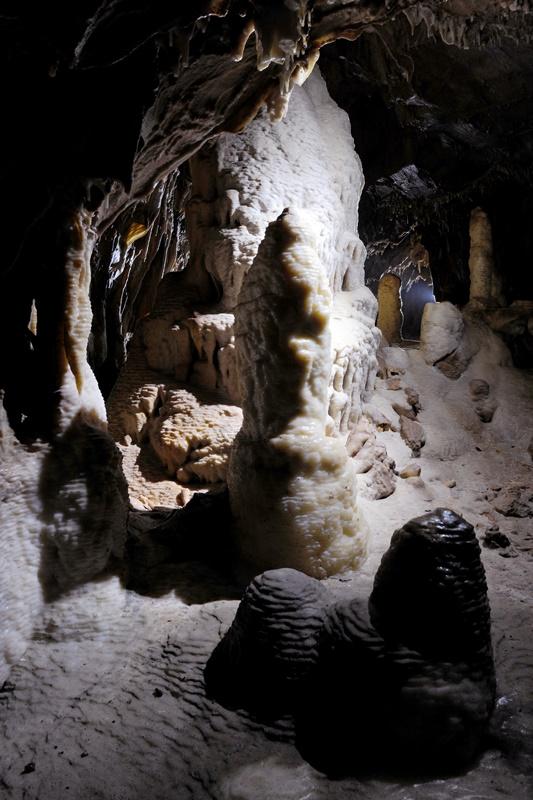Balcarka Cave - Natural conditions

GEOLOGICAL DEVELOPMENT OF THE AREA
The Moravian Karst is formed by limestones, 350–380 million year old organogenous sea sediments from Middle to Late Devonian. According to evolutionary phases, it forms the Josefov, Lažánky, Vilémovice and Křtiny formations of limestones with the total thickness estimated at 500–1,000 m. In the west, the limestones lie on old deep-mined volcanic rocks, granodiorites of the Brno Massif; in the east they are overlapped by younger Culm greywackes and shales of Carboniferous age. After the Palaeozoic sea dereliction and mighty Variscan folding which hit the whole Bohemian massif, the exposed limestone mountains began to undergo intensive karstification. During the Mesozoic and Tertiary eras it was again interrupted by short-term sea floods, which reflected orogenic unrest of the main phases of the neighbouring mighty Alpine folding.
The Mesozoic Sea then left its carbonate sediments with fossils of ammonites, belemnites and other sea animals, e.g. in the surroundings of Olomučany. Vari-coloured layers of kaolinitic sands and clays filling deep karst depressions (so-called sand pies) survived from the Early Cretaceous Period in the surroundings of the village of Rudice. They are the remains of continental sedimentation under a tropical climate. The following development of the Moravian Karst was markedly influenced by the Badenian sea flooding in the Tertiary. Deep karst canyons with the oldest cave systems at that time were filled with young clay sediments from the Vienna Basin, which basically changed the hydrographic development of the whole region.

From the middle Tertiary, the Moravian Karst gradually changed to the present form.
STALACTITE AND STALAGMITE DECORATION OF THE BALCARKA CAVE
The Balcarka Cave is a cave with extraordinarily rich, varied and colourful stalactite decoration. Flat ceilings developed by bedded jointing of limestones are decorated with numerous long straw, stick and carrot stalactites. The walls are covered with rugged sinter coatings and warty sinters (so-called pizolites). There are also numerous conical stalagmites of various shapes and sizes growing from the floor. Visitors, however, will also be captivated by the colourfulness of the stalactite decoration. In addition to transparent snowy white stalactites and stalagmites formed by highly clear crystals of calcite, there are also stalactite and sinter forms coloured with oxides of trivalent iron of a wide range of colours: yellow, beige and reddish-brown. There are also remarkable honey-coloured clusters of calcite concretions that are several centimetres long formed at the bottom of the rimstone pool in the so-called Cukrová pohádka (Sweet Fairy Tale) – see below.
"I wish for my countrymen to watch over the precious jewels hidden for tens of thousands of years by the Balcarka Cave, which was uncovered by me and entrusted by me to you!", Josef Šamalík (1937)
"I hope that even the smallest stalactite can stay protected forever, just like beautiful stalagmites, curtains and draperies, so that the fairy tale underworld of the Balcarka Cave remains intact for all time!", Josef Šamalík (1937).
